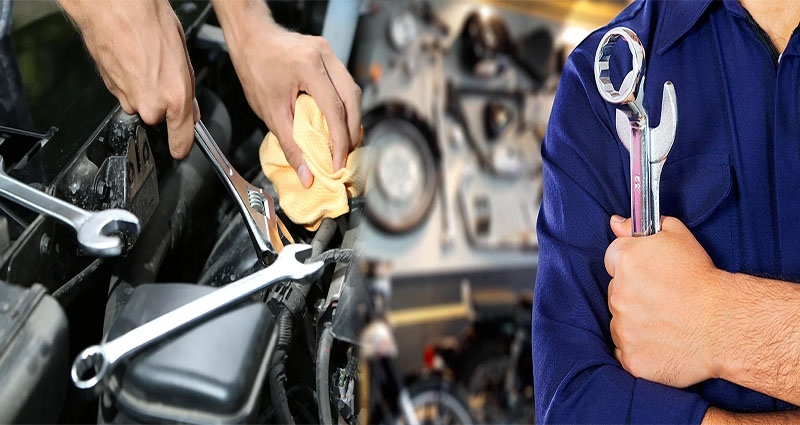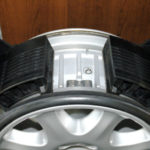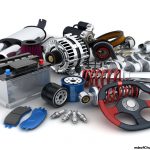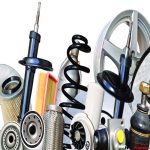If you’re like me, your garage is full of things that don’t really go together—a socket set here, some random tools there. It’s enough to make a mechanic want to cry. But when it comes to repair work, the right tools are essential. So what exactly do you need? I’ve put together this handy guide so that if you’re thinking about setting up a home workshop or just refilling your toolbox with new pieces, you’ll know which items will get the job done right every time.
Workbench
- Choose a workbench that is large enough to hold all your tools. If you have more than one person working in the garage, make sure there’s enough room for both of them to work comfortably at the same time.
- Choose a sturdy and well-built workbench with an excellent surface for holding items on top of it (such as automotive parts). Avoid using tables made of wood or particle board; these materials are not strong enough for automotive use and may warp over time from exposure to heat and moisture in the shop environment, which can cause them to fall apart during use by either yourself or other mechanics who might try out some repairs while they’re visiting their friends’ garages!
- Pick out something with plenty of storage space underneath so you won’t lose anything important when storing tools away after every job–and remember: never throw anything away until after checking everything off this list first!
Jacks, stands and ramps
Jack, stand and ramp are the three most essential auto shop tools. They enable you to work on your car without damaging its undercarriage.
A jack is used to lift up a vehicle so that work can be done underneath it. There are many different types of jacks available, but they all have one thing in common: they’re meant for lifting cars off the ground so their tires don’t touch anything while working on them. The two most common kinds are hydraulic jacks and scissor jacks (also known as bottle jacks). Hydraulic jacks use hydraulic pressure from a power source such as an air compressor or engine-driven pump; they’re more expensive but easier to use than scissor jacks because they require less effort when raising or lowering your car’s body off the ground safely without damaging its undercarriage due to improper height adjustment settings by human hands during operation time frames when lifting heavy objects above waist level height requirements like trees branches overhead typically found outdoors where most people tend not using precautions against injury risks associated with falling objects falling onto them unexpectedly causing bodily harm injuries requiring medical attention treatment costs needed afterward – this includes injuries sustained during accidents involving vehicles speeding down highways towards each other head-on collisions where passengers inside collide violently together resulting serious head injuries requiring surgeries after accidents happen too often today due to reckless driving habits practiced daily by inexperienced drivers who don’t know how much damage caused may cause serious injury/deaths!
Wrenches
Wrenches are used to tighten and loosen nuts and bolts, which is why you’ll need a variety of them in your toolbox. Wrenches come in a variety of styles, including open end, box end, crescent and socket wrenches.
The size of the wrench will depend on the size of nut or bolt it is being used for. The most common types are SAE (inch) and metric sizes; however there are others such as UNF (fine thread). The widths differ between these two different systems so be sure that you know what type you need before purchasing any tools!
Joint tools
Joint tools are used to connect two pipes together. They come in various shapes and sizes, but they all have a few things in common:
- A joint tool has a male end and female end that fit together like puzzle pieces. When you slide the two ends together, they form a tight seal between them so that no air or liquid can escape from your plumbing system.
- Joint tools are made of metal or plastic, depending on what material you choose for your project (e.g., copper vs PVC). They’re also available in many different sizes–from 1/2 inch all the way up through 4 inches–so you can use them with pipes ranging from 1/4 inch diameter up through 2 inches diameter!
Impact guns and sockets
- Impact guns and sockets are used to remove stubborn bolts.
- Impact sockets are designed to withstand the torque created by impact guns, which makes them ideal for removing lug nuts or other fasteners on your vehicle.
- Impact sockets have a hexagonal shape that allows you to use an impact wrench or ratchet with them.
Hammers and mallets
There are two main types of hammers: metal and wood. A metal hammer is used to drive or remove nails and other fasteners, while a wood mallet is used to drive wedges into wood.
Most people think that any old hammer will do the job, but there are actually several factors to consider when purchasing a new one. First and foremost, you need to make sure that the head is made from hardened steel or alloyed metals that won’t chip or break easily; this ensures durability over time as well as performance in high-stress situations like driving large nails through thick planks of hardwood flooring. The face should also be flat so as not to damage anything being hammered (such as your thumb!). Finally, look for handles with molded grips so as not slip while working with them–this could lead not only injury but also lost time spent repairing damages caused by dropping your tools onto surfaces below where they should have been held firmly at all times!
Pliers
Pliers are a common tool used to grip and hold objects. They come in many shapes and sizes, including needle-nose pliers, which have a pointed tip for reaching into small spaces.
There are also wire cutters that can be used to cut wires when working on your car.
Pliers can also be used for bending or straightening metal parts. For example, if you need to remove nails from your tires but don’t have access to an air compressor (which would normally be used), then using these tools will allow you do so easily without damaging any of the rubber around them or causing other types of damage!
Sockets, ratchets and extensions
- Keep in mind that you’ll need to match the socket size with the bolt or nut you are trying to remove. Sockets come in different sizes, so make sure you buy the right one for the job.
- Ratchets are used for tightening and loosening nuts and bolts by turning them with an adjustable handle. They’re great tools because they allow users to apply more torque than would be possible by hand alone–and they’re faster than using a wrench alone!
- Extensions are helpful when getting at hard-to-reach places on your car or truck; they can also be attached as part of an extension bar set if needed (though most people won’t need more than two extensions).
You can use this guide to choose the tools you need in your garage
- You can use this guide to choose the tools you need in your garage.
- You can also use it to help you decide what tools you need for your garage.
- You can use it to help you decide what tools you need for your garage.
We hope this guide has helped you understand the different types of tools that are available for automotive repair. We also hope it has given you some ideas about where to start with your tool collection as well as what kind of things might be useful in your garage or shop. Whether you’re just starting out or have been doing this for years, there’s always room for improvement when it comes down











